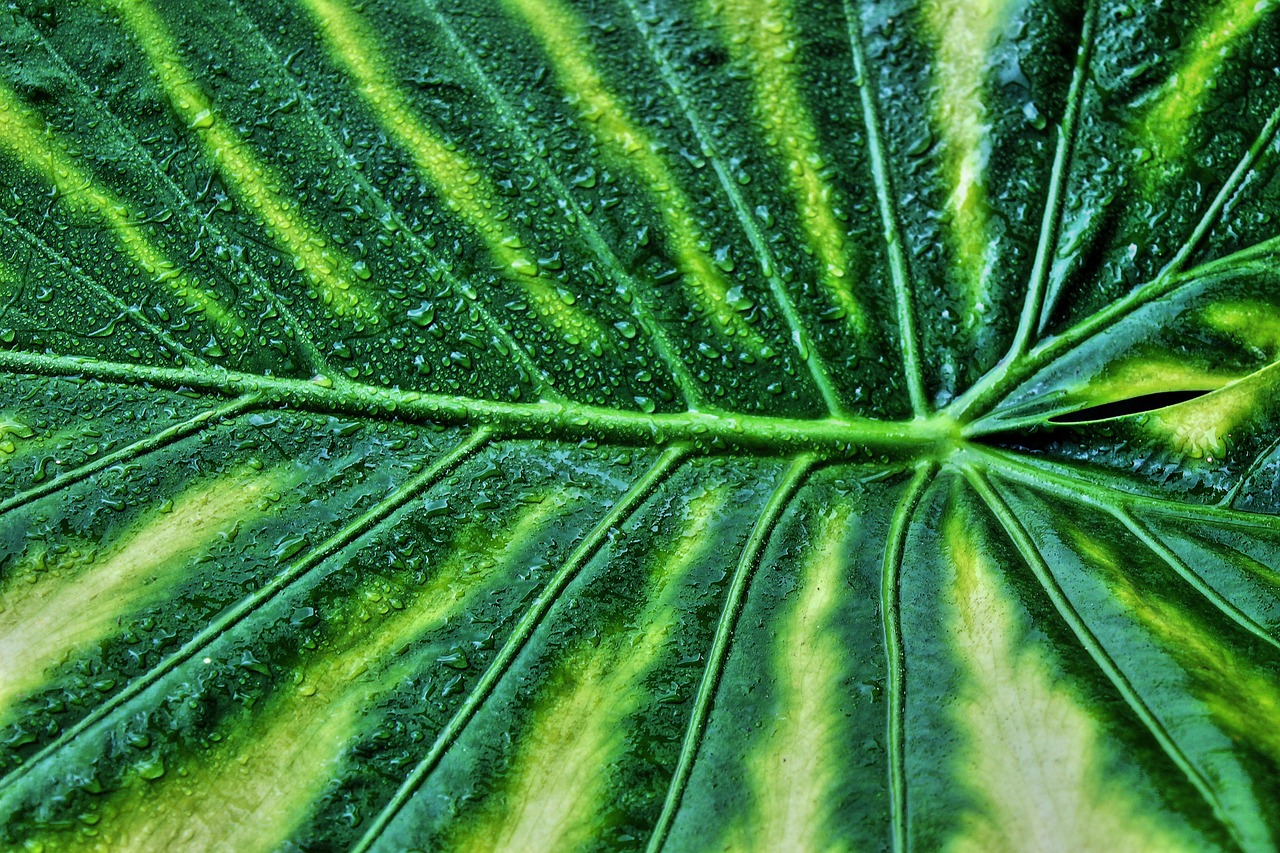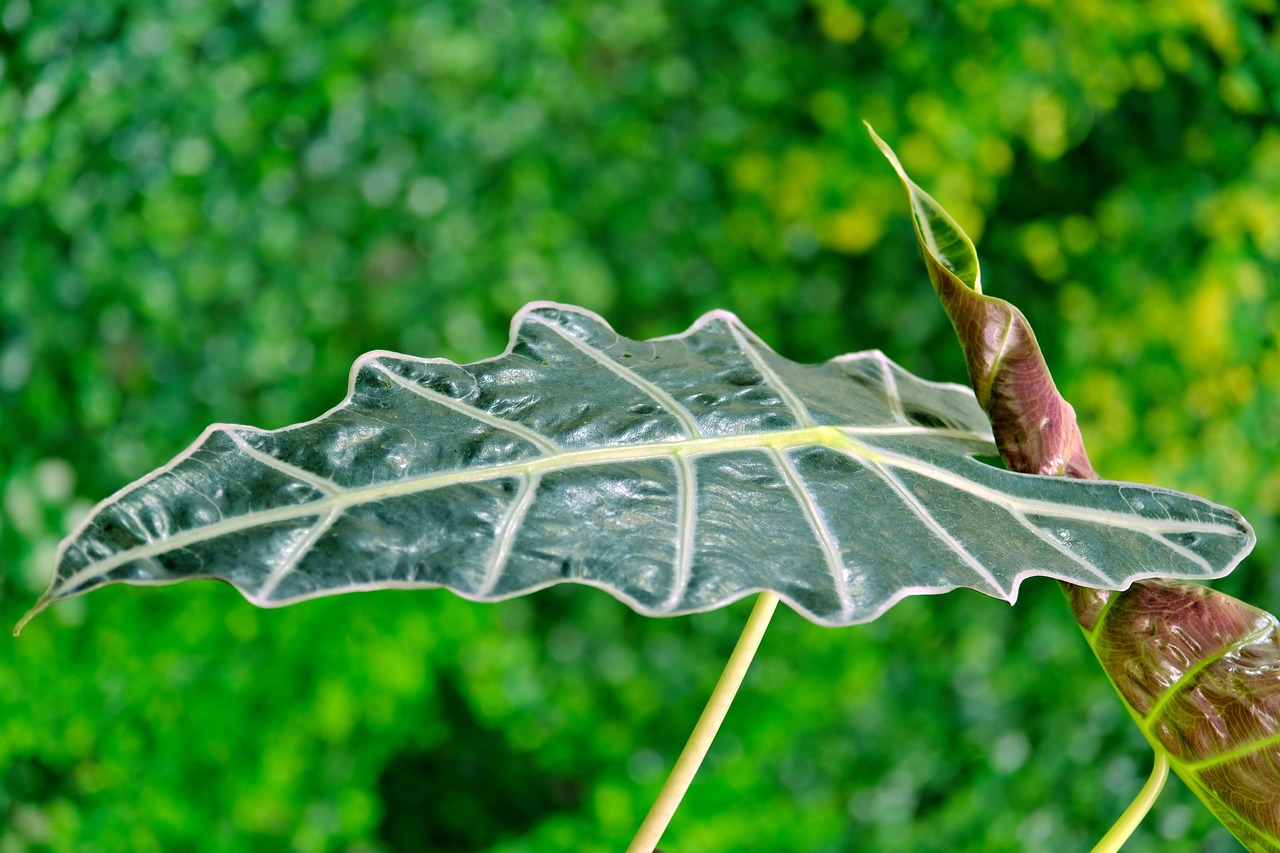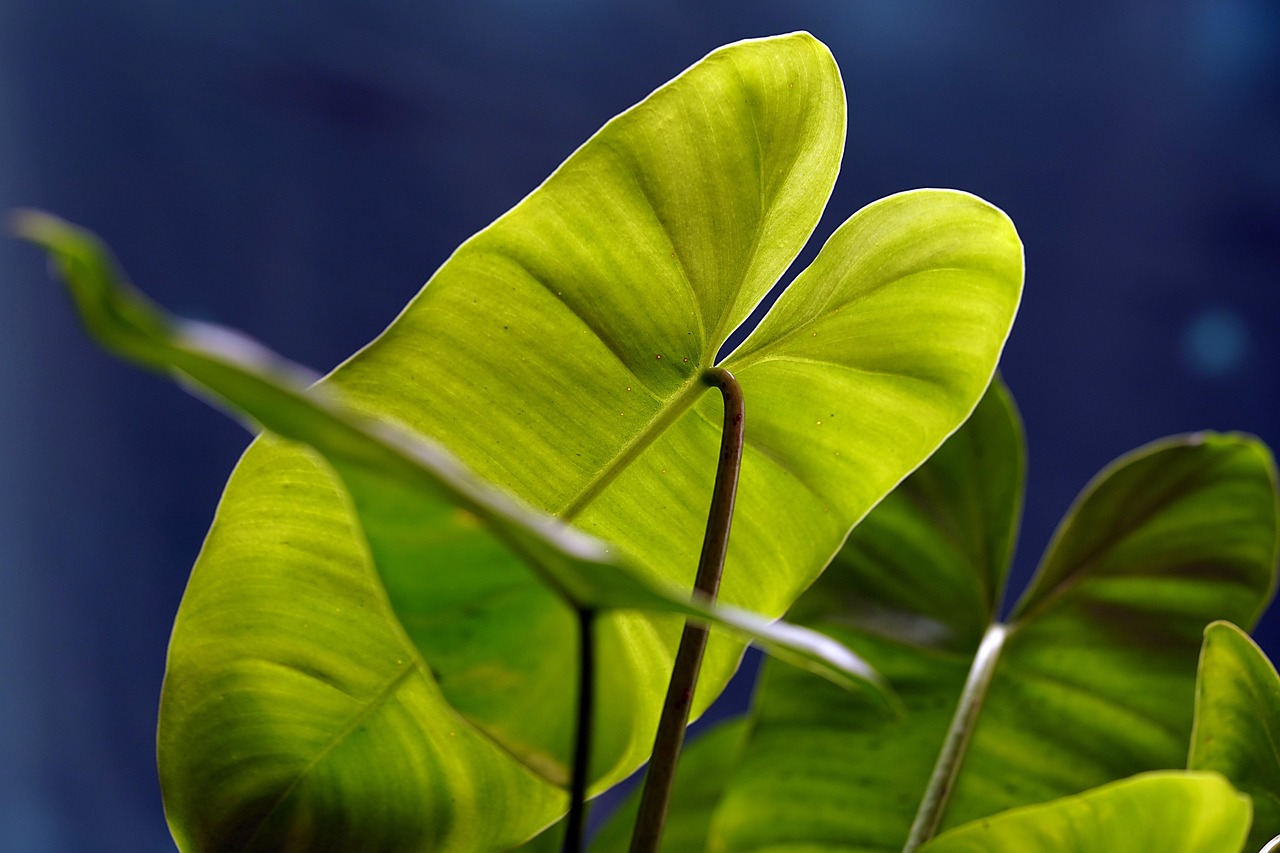The Alocasia Regal Shield is a stunning indoor plant known for its striking foliage and unique shape. It thrives in well-draining soil and requires specific light and humidity conditions to flourish indoors.
Introduction to Alocasia Regal Shield

Alocasia Regal Shield, a member of the Araceae family, is cherished by plant enthusiasts for its impressive shield-shaped leaves. This tropical plant hails from Southeast Asia, where it grows in the understory of rainforests. Its leaves can grow up to 3 feet long and are characterized by their dark green color, prominent veins, and slightly wavy margins. The plant not only adds beauty to your home but also purifies the air, making it an excellent choice for indoor spaces.
This guide will cover essential aspects of growing Alocasia Regal Shield indoors, ensuring that you can cultivate this magnificent plant successfully. From understanding its natural habitat to learning about care requirements, we will explore everything you need to know.
Before diving into the care tips, let’s take a look at some key characteristics of the Alocasia Regal Shield that make it a desirable indoor plant:
| Characteristic | Description |
|---|---|
| Common Name | Alocasia Regal Shield |
| Scientific Name | Alocasia ‘Regal Shield’ |
| Light Requirements | Bright, indirect light |
| Watering Needs | Moderate moisture; allow topsoil to dry |
| Humidity Level | High humidity (60% or higher) |
| Temperature Range | 65°F to 80°F (18°C to 27°C) |
To ensure your Alocasia Regal Shield thrives, it is important to replicate its natural environment as closely as possible. This involves providing adequate light, water, and humidity. Understanding these needs will help you create a healthy living space for your plant.
Alocasia Regal Shield is often mistaken for other varieties due to its striking appearance. However, its unique leaf shape and texture set it apart. The leaves are not only beautiful but also serve an important function in photosynthesis, enabling the plant to grow robustly.
When choosing a location for your Alocasia Regal Shield, consider areas in your home that receive bright, indirect sunlight. Direct sunlight can scorch the leaves and hinder growth. Additionally, maintaining high humidity levels is crucial to prevent the leaves from browning and curling.
In the following sections of this guide, we will delve deeper into specific care practices, including watering techniques, soil selection, and pest management. By following these guidelines, you will be well on your way to successfully growing your Alocasia Regal Shield indoors.
Watering Your Alocasia Regal Shield
Proper watering is essential for the health of your Alocasia Regal Shield. Overwatering or underwatering can lead to significant issues, including root rot or dehydration. Understanding the specific watering needs of this plant will help you keep it thriving.
The key to watering your Alocasia Regal Shield is to check the moisture level of the soil regularly. Here are some tips for effective watering:
- Soil Check: Stick your finger about an inch into the soil. If it feels dry, it is time to water. If it is still moist, wait a few more days.
- Watering Frequency: Typically, you should water your plant every 7 to 10 days, depending on environmental conditions like humidity and temperature.
- Drainage: Ensure your pot has drainage holes to prevent water from accumulating at the bottom. This will help avoid root rot.
- Water Quality: Use room temperature water. Cold water can shock the roots, while chlorine in tap water can be harmful. Consider using distilled or rainwater for best results.
Soil Requirements
The right soil mix is crucial for the growth of your Alocasia Regal Shield. This plant thrives in well-draining soil that retains some moisture but does not become waterlogged. A good soil mix will provide the necessary nutrients while allowing air circulation to the roots.
Consider using a combination of the following components for your soil mix:
- Potting Soil: Start with a high-quality potting soil as the base.
- Coconut Coir or Peat Moss: These materials help retain moisture while providing aeration.
- Pine Bark or Perlite: Add these for increased drainage and to prevent soil compaction.
A recommended soil mix ratio is:
- 50% potting soil
- 30% coconut coir or peat moss
- 20% perlite or pine bark
Humidity and Temperature Conditions
Alocasia Regal Shield thrives in high humidity and warm temperatures. Mimicking its native tropical environment is essential for its growth. Here are some ways to maintain optimal humidity and temperature levels:
- Humidity Levels: Aim for humidity levels between 60% and 80%. You can achieve this by using a humidifier or placing a tray of water near the plant.
- Grouping Plants: Consider grouping your Alocasia with other houseplants. This can create a microclimate with higher humidity.
- Avoid Cold Drafts: Keep your plant away from doors and windows that may expose it to cold drafts during winter.
- Temperature Range: Maintain temperatures between 65°F and 80°F (18°C to 27°C). Avoid sudden temperature fluctuations.
Pest Management
Pests can pose a threat to the health of your Alocasia Regal Shield. Being proactive about pest management is crucial in maintaining its vitality. Here are some common pests that may affect your plant and how to manage them:
- Spider Mites: These tiny pests thrive in dry conditions. Increase humidity around your plant and wipe leaves with a damp cloth to remove them.
- Mealybugs: These pests appear as white cotton-like masses on stems and leaves. Remove them manually and treat the plant with insecticidal soap if needed.
- Aphids: These small insects can suck sap from your plant, causing leaf curling. Use neem oil or insecticidal soap to control their population.
Regularly inspecting your plant for signs of pests can help you catch infestations early. Additionally, maintaining proper care conditions will make your Alocasia less susceptible to pest issues.
By fo

cusing on watering, soil composition, humidity, temperature, and pest management, you will create an environment where your Alocasia Regal Shield can flourish indoors. The next sections will further explore propagation techniques and common challenges faced by growers.
Propagation Techniques for Alocasia Regal Shield
Propagation is an exciting way to expand your collection of Alocasia Regal Shield or share it with friends. This plant can be propagated through division, which is the most common method. Understanding the right techniques can help ensure successful propagation.
Division Method
The division method involves separating a mature plant into smaller sections, each capable of growing into a new plant. Here’s a step-by-step guide on how to propagate your Alocasia Regal Shield through division:
- Choose the Right Time: The best time to propagate your plant is during the growing season, typically in spring or early summer.
- Prepare Tools: Gather sharp, clean tools such as a knife or garden shears, and have fresh potting soil ready.
- Remove the Plant: Gently remove the Alocasia from its pot, being careful not to damage the roots.
- Inspect the Roots: Examine the root system for natural divisions. Look for areas where the plant has formed separate clumps.
- Make Cuts: Using your sharp tool, cut through the roots to separate the clumps. Each division should have at least a few roots and a healthy leaf or two.
- Potting: Immediately pot each division in its own container with fresh soil, ensuring that the roots are covered but not overly packed.
- Watering: Water each new plant thoroughly after potting to help settle the soil around the roots.
Care for Newly Propagated Plants
After propagating your Alocasia Regal Shield, it is essential to provide proper care for the new plants. Here are some tips:
- Humidity: Keep humidity levels high around newly propagated plants. You can cover them with a plastic bag to create a mini greenhouse effect, removing it once they establish.
- Light: Place them in bright, indirect sunlight to promote growth without overwhelming them.
- Watering: Water them lightly and allow the soil to dry slightly between waterings until they show signs of new growth.
Common Challenges in Growing Alocasia Regal Shield
While c

aring for an Alocasia Regal Shield can be rewarding, there are common challenges that growers may face. Being aware of these issues can help you address them quickly.
Leaf Yellowing
If you notice yellow leaves on your Alocasia Regal Shield, this could indicate several problems:
- Overwatering: Yellowing leaves are often a sign of root rot due to excessive moisture in the soil. Ensure that you are allowing the top inch of soil to dry out before watering again.
- Nutrient Deficiency: A lack of essential nutrients can also cause yellowing. Consider using a balanced liquid fertilizer during the growing season.
Leaf Curling
Curling leaves can be distressing, and this issue may stem from several factors:
- Low Humidity: As a tropical plant, Alocasia Regal Shield thrives in high humidity. If humidity levels drop, leaves may curl. Use a humidifier or mist your plants regularly.
- Pest Infestation: Pests like aphids or spider mites can also cause leaf curling. Regular inspections can help catch infestations early.
Stunted Growth
If your Alocasia is not growing as expected, consider these factors:
- Light Conditions: Insufficient light can halt growth. Ensure your plant receives bright, indirect light for optimal growth.
- Potted Too Tightly: If your plant has outgrown its pot, root-bound conditions can stunt growth. Repot into a larger container to give roots more space.
By understanding propagation techniques and common challenges, you will be better equipped to care for your Alocasia Regal Shield. In the following section, we will explore advanced care tips and seasonal considerations to help your plant thrive year-round.
Advanced Care Tips for Alocasia Regal Shield
To trul

y excel at growing your Alocasia Regal Shield, consider implementing some advanced care techniques. These tips can help you enhance the health and beauty of your plant, ensuring it remains a stunning focal point in your home.
Fertilization Strategies
Feeding your Alocasia Regal Shield during its active growth period is essential for robust growth and vibrant leaves. Here are some fertilization strategies:
- Type of Fertilizer: Use a balanced, water-soluble fertilizer with an N-P-K (Nitrogen-Phosphorus-Potassium) ratio of 20-20-20 or similar. This will provide the necessary nutrients for healthy growth.
- Frequency: Fertilize every 4 to 6 weeks during the growing season (spring and summer). Reduce or stop fertilizing in fall and winter when the plant’s growth slows down.
- Dilution: Always dilute the fertilizer to half the recommended strength to avoid burning the roots.
Repotting
Repotting is crucial for maintaining the health of your Alocasia Regal Shield. Here’s when and how to do it:
- Timing: Repot your plant every 1 to 2 years, ideally in spring, when it begins to actively grow.
- Signs of Repotting: Look for signs such as roots growing out of drainage holes or water not absorbing well in the soil.
- Pot Size: Choose a pot that is 1 to 2 inches larger in diameter than the current one. Ensure it has adequate drainage holes.
Seasonal Considerations
Caring for your Alocasia Regal Shield may require adjustments based on seasonal changes. Here are some seasonal tips:
- Spring: This is the best time for repotting and fertilizing. New growth typically begins during this season.
- Summer: Maintain high humidity, keep an eye on watering, and continue regular fertilizing to support vigorous growth.
- Fall: Gradually reduce watering as the plant’s growth slows down. This is also a good time to inspect for pests.
- Winter: Protect your plant from cold drafts and maintain minimal watering. Ensure it receives adequate light, as days are shorter.
Final Thoughts
The Alocasia Regal Shield is a magnificent indoor plant that can bring life and elegance to any space. By understanding its specific needs regarding watering, soil, humidity, and light, you can create an optimal environment for growth. Regular attention to pest management and seasonal adjustments will help ensure your plant remains healthy and vibrant.
Whether you are propagating new plants or facing common challenges, knowledge is key. With patience and dedication, you will enjoy the beauty and benefits of your Alocasia Regal Shield for many years to come. Happy planting!
